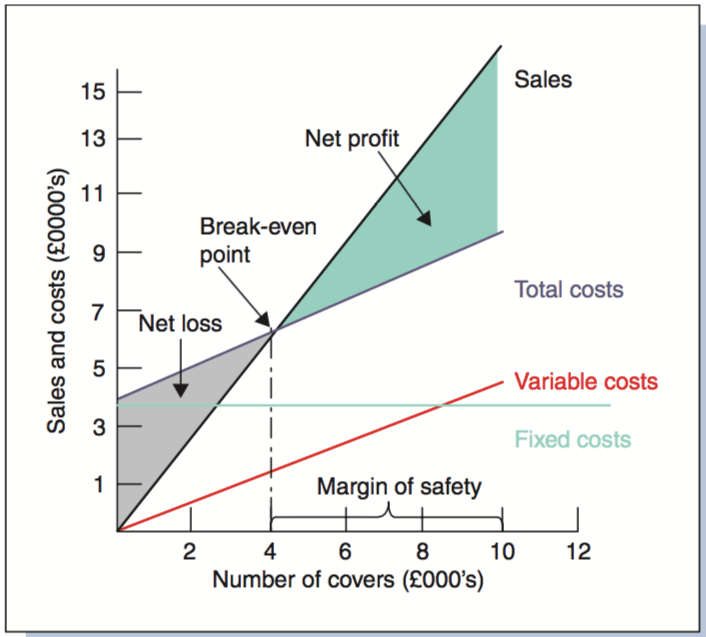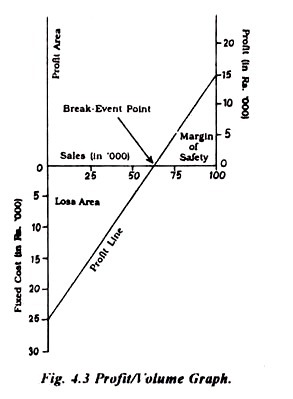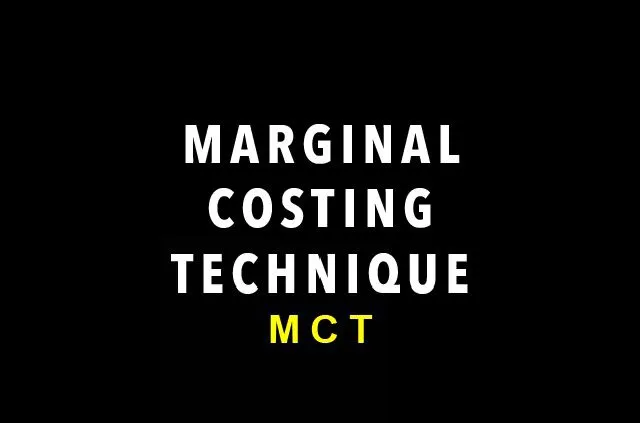TOOLS AND TECHNIQUES OF MARGINAL COSTING
Marginal costing is a technique of ascertaining cost used in any method of costing. According to this technique, variable costs are charged to cost units and the fixed cost attributable to the relevant period is written off in full against the contribution for that period. Contribution is the difference between sales value and variable cost. Thus, all expenses are classified under two groups, variable and fixed. The various Tools and Techniques of marginal costing are as follows:
CONTRIBUTION
Contribution margin of a product is the difference between the selling price and its variable cost. It is obtained by subtracting marginal cost from sales revenue of a given activity. The difference between sales revenue and variable cost is called contribution since it contributes towards fixed expenses and profit of the entire business. It is also known as ‘unit contribution margin’ or ‘marginal contribution per unit’.
In normal circumstances, selling prices contain an element of profit but there may be circumstances, when products may have to be sold at cost or even at loss. Therefore, the character of contributions will have the following composition under different circumstances:
- Selling price containing profit: Contribution = Fixed cost + Profit
- Selling price at Cost: Contribution = Fixed Cost
- Selling price at loss: Contribution = Fixed Cost – Loss
The contribution concept is based on the theory that the profit and fixed expenses of a business is a joint cost which cannot be equitably apportioned to different segments of the business. The concept of break-even analysis emerges out of this theory.
PROFIT VOLUME RATIO
The P/V Ratio shows percentage of contribution to the sales value i.e. margin as percentage of sales out of it the fixed cost is met and there is a profit.
Contribution = Sales Value × P/V Ratio
P/V ratio is a relative ratio. It cannot be adopted independently. If it is studied in an isolated way, it will not give much information. As fixed costs are not relevant in the calculation of P/V ratio, erroneous conclusions may be arrived.
FEATURES OF PROFIT VOLUME RATIO (PV RATIO)
• It is the ratio of contribution to sales.
• This ratio is usually expressed in percentage.
• The higher the PV Ratio, the better it is.
• It indicates the effect on profit for a given change in the sales.
• It measures the profitability of each product, process, operation etc.
• It facilitates managerial decision making.
CALCULATION
The Profit Volume Ratio can be calculated as follows:
- PV Ratio = (Contribution/ Sales) x 100
- PV Ratio = (Changes in Profit/ Changes in Sales) x 100
- PV Ratio = 100 – Variable Cost Ratio
BREAK EVEN POINT
Break-even point is a point where the total sales or revenue are equal to total costs. In breakeven point, there is no profit or loss in the volume of sales. In other words, it is a point at which no profit no loss situation prevails in the operating activity of a business firm. This indicates that the break-even point is the minimum level of production at which total cost is recovered and no profit or no loss is sustained.
ACCORDING TO CHARLES T. HORNGREN
“The break-even point is that point of activity (sales volume) where total revenue and total expenses are equal; it is the point of zero profit and zero loss.”
ACCORDING TO G. R. CROWNINGSHEILD
“Break-even point is the point at which sales revenue equals the cost to make and sell the product and no profit or loss is reported.”
The following fundamental formula is used to calculate break-even point:
Break-even Point = Fixed Cost/ P/V ratio
Break-even Point (in units) = Fixed cost / Contribution per unit
MARGIN OF SAFETY
Margin of safety is the difference between the actual sales and sales at break-even point. Sales beyond break-even volume bring in profits. Such sales represent a margin of safety. Margin of safety is calculated as follows:
Margin of safety = Total sales – Break even sales
Margin of safety can also be calculated with the help of P/V ratio i.e.
Margin of safety = Profit/ P/V Ratio
Margin of safety can also be expressed as percentage of sales:
(Margin of safety/ Total sales)* 100
It is important that there should be reasonable margin of safety; otherwise, a reduced level of activity may prove disastrous. The soundness of a business is gauged by the size of the margin of safety. A low margin of safety usually indicates high fixed overheads so that profits are not made until there is a high level of activity to absorb fixed costs.
A high margin of safety shows that break-even point is much below the actual sales, so that even if there is a fall in sales, there will still be a point. A low margin of safety is accompanied by high fixed costs, so action is called for reducing the fixed costs or increasing sales volume.
The margin of safety may be improved by taking the following steps:
- Lowering fixed costs.
- Lowering variable costs so as to improve marginal contribution.
- Increasing volume of sales, if there is unused capacity.
- Increasing the selling price, if market conditions permit, and
- Changing the product mix as to improve contribution.
BREAK EVEN CHARTS
ACCORDING TO THE CHARTERED INSTITUTE OF MANAGEMENT ACCOUNTANTS, LONDON
“The break-even chart means a chart which shows profit or loss at various levels of activity, the level at which neither profit nor loss is shown being termed as the break-even point”.
It is a graphic relationship between costs, volume and profits. It shows not only the BEP but also the effects of costs and revenue at varying levels of sales. The break-even chart can therefore, be more appropriately called the cost-volume-profit graph.
Assumptions regarding Break even charts
Assumptions regarding Break-Even Charts are as under:
- Costs are bifurcated into variable and fixed components.
- Fixed costs will remain constant and will not change with change in level of output.
- Variable cost per unit will remain constant during the relevant volume range of graph.
- Selling price will remain constant even though there may be competition or change in volume of production.
- The number of units produced and sold will be the same so that there is no operating or closing stock.
- There will be no change in operating efficiency.
- In case of multi-product companies, it is assumed that the sales mix remains constant.

PROFIT VOLUME GRAPH
Profit volume graph is the graphical representation of the relationship between profit and volume. Separate lines for costs and revenues are eliminated from the P/V graph as only profit points are plotted. It is based on the same information as is required for the traditional break-even chart and is characterized by the same limitations. The steps in the construction of profit volume graph are as follows:
- Profit and fixed costs are represented on the vertical axis.
- Sales are shown on the horizontal axis.
- The sale line divides the graph into two parts both horizontally and vertically. The area above the horizontal line is the ‘profit area’ and that below it is the ‘loss area’ at which fixed costs are represented on the vertical axis below the sale line and profits on the same axis above the sale line.
- Profits and fixed costs are plotted for corresponding sales volume and the points are joined by a line which is the profit line.
The Profit Volume graph is as follows:

JOIN THE CHANNEL ON TELEGRAM
CONNECT ON LINKEDIN
https://www.linkedin.com/in/kajal-mahajan-7549b2197/
